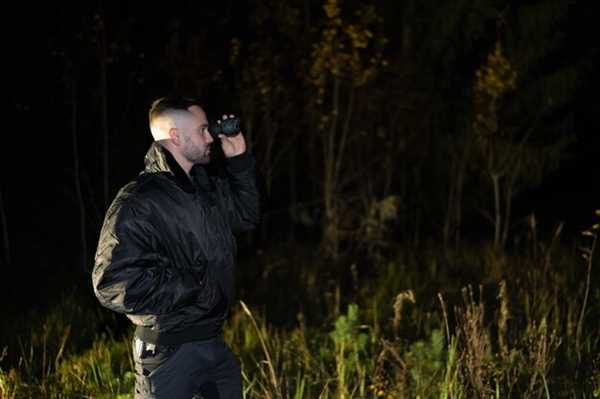
Choosing a reliable optical device can greatly enhance your experience while searching for valuable artifacts in low-light conditions. Compact and lightweight options provide convenience and ease of use, all while delivering clarity that is crucial for spotting elusive items.
When considering features, prioritize magnification levels that allow you to see distant targets clearly. A device with at least 5x magnification will enable you to discern details from a safe distance, reducing the risk of detection. Additionally, look for models with a built-in infrared illuminator, which ensures visibility even in near-total darkness.
Battery life is another critical aspect; an extended operating time will prevent interruptions during prolonged use. Models that support both rechargeable and standard batteries can add flexibility to your setup, ensuring you are always prepared for unexpected situations.
Lastly, examine the construction of the device. Waterproof and shock-resistant designs will protect your equipment from environmental factors, extending its lifespan during your expeditions. This durability is vital when traversing rugged terrains in pursuit of hidden gems.
Choosing the Right Night Vision Monocular for Your Treasure Hunt

Select a device with a magnification level between 5x to 10x for optimal detail while exploring. Higher magnifications may reduce field of view, making it harder to spot expansive areas.
Look for models with at least 40mm objective lenses. This size allows for improved light transmission, enhancing the clarity and quality of the images in low-light conditions.
Check for features such as adjustable eyecups for comfortable usage, especially if you wear glasses. A solid grip is also important to prevent slips during your adventure.
Consider options with built-in infrared illumination. This function is particularly helpful in complete darkness, ensuring you can examine surroundings without any external light sources.
Assess durability aspects; models that are waterproof and shock-resistant will withstand the rigors of outdoor exploration. Lightweight construction will be beneficial for prolonged use without fatigue.
Finally, select a product with good customer reviews and a reliable warranty. Consistent user feedback reflects performance in real-world conditions and can guide your decision-making process.
Techniques for Using Night Vision Monoculars in Different Environments

Utilize infrared illuminators in dense forests where ambient light is minimal. These tools enhance clarity and allow clear identification of movement among foliage.
On open terrain, adjust the focus range according to distance. Far objects may require more precision, ensuring that details like tracks or outlines of potential finds are discernible.
In urban settings, avoid looking directly at bright lights, which can cause temporary blindness. Instead, use peripheral vision to navigate and detect reflections indicative of valuable items.
For coastal areas, take advantage of moonlight. Water surfaces can reflect light, revealing submerged or partially exposed objects. Scan along shorelines for glimmers that signal potential discoveries.
In mountainous regions, utilize elevation to your advantage. Higher vantage points offer broader visibility, making it easier to spot contrasts in terrain where hidden objects might reside.
When exploring archaeological sites, maintain a slow scanning motion to capture details without overwhelming your sight. Look for variations in soil texture or coloration that indicate buried artifacts.
During inclement weather, ensure the device has effective water resistance. Moisture can obstruct visibility, so consider protective coverings when necessary.
Lastly, practice adjusting your settings based on the environment. Experiment with brightness and contrast to find optimal viewing conditions, tailored to specific hunting scenarios.
Maintenance Tips for Prolonging the Life of Your Night Vision Monocular
Store your device in a protective case to prevent damage from dust and moisture. Ensure the case is padded and water-resistant.
Regularly clean the lenses with a microfiber cloth to remove smudges and debris. Avoid using rough materials that can scratch the surface.
Check battery life frequently. Remove batteries if the device will not be used for an extended period to prevent leakage.
Avoid exposing the device to extreme temperatures. Both cold and heat can cause internal components to malfunction.
Calibrate the focus periodically to maintain optimal performance. This ensures clear images during your adventures.
Inspect for signs of wear or damage after each outing. Address issues immediately to prevent further deterioration.
Use only manufacturer-approved accessories and components to ensure compatibility and reliability, particularly in low-light conditions.
- Maintain the exterior by wiping it down with a damp cloth after use.
- Avoid touching the lenses with bare fingers to prevent oil stains.
- Store in a stable environment, away from direct sunlight and humidity.
Familiarize yourself with user manuals for specific maintenance recommendations tailored to your model. This knowledge can enhance your experience while searching for hidden items.


